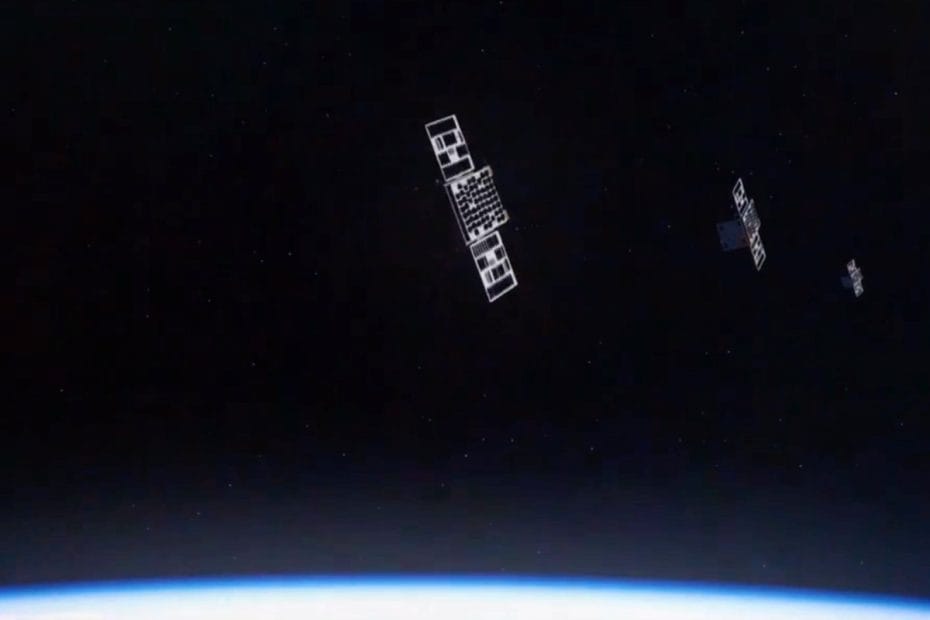Google-backed Pixxel launches India's first private satellite constellation
Indian space technology startup Pixxel has successfully launched the first three hyperspectral satellites of its commercial constellation Firefly from California using a SpaceX rocket, marking a major milestone in India's growing space ambitions.
India has about 300 aerospace start-ups, and its recent developments have attracted worldwide attention, including the successful landing of its lunar spacecraft at the South Pole, the launch of the corona spacecraft, and its cooperation with NASA to join the Artemis Accords. In addition, India plans to launch its first manned space mission next year, have a space station by 2035, and send an astronaut on a three-day lunar mission by 2040.
The latest launch, the start of commercial operations for Bengaluru-based Pixxel, took place on Tuesday at around 10:45 a.m. PT at Vandenberg Space Force Base on SpaceX's Transporter-12 ride-sharing mission. Hyperspectral satellites are growing in popularity among aerospace companies as major companies and governments seek insights into deforestation, ocean pollution, oil spills and water quality. While drones can provide some data, in most cases satellites are generally more effective and efficient.
The three satellites are part of the five-year-old startup's first commercialization phase, which will see it launch three more satellites in the second quarter, company officials said in an interview hours before the launch. A total of 18 to 24 satellites will be launched from 2026 to 2027.
“This is the world’s highest-resolution hyperspectral satellite constellation and India’s first private commercial constellation,” Pixxel co-founder and CEO Awais Ahmed told TechCrunch.
The Firefly satellite built by Pixxel provides hyperspectral imagery with a resolution of 5 meters, covering an area 40 kilometers (about 25 miles) wide. These satellites can capture data in more than 150 spectral bands to detect subtle changes in chemical composition, vegetation health, water quality and atmospheric conditions. Airborne narrowband sensors help uncover hidden patterns and anomalies, which could help in agricultural and climate applications.
The startup has signed up more than 60 customers over the past few years, including the Indian Ministry of Agriculture, BP and NASA. Ahmed said some companies are already acquiring hyperspectral imagery data through demonstration satellites launched in 2021 and 2022, but the six satellites the startup plans to launch this year will bring “much more data than the demonstration satellites.”

“It's like when you hear a note, you understand what keys it is made up of, and those keys are what we're trying to pick out with hyperspectral data,” Pixxel co-founder and CTO Kshitij Khandelwal told TechCrunch of.”
The satellites will orbit in a sun-synchronous orbit of approximately 342 miles. While the first three satellites will help Pixxel begin commercial operations, they will not provide daily global coverage, but instead provide insights every two to three days. Pixxel executives said they would need to add three additional satellites for daily coverage.
Commercial satellites also include local propulsion systems that help them stay in precise orbits for up to seven years, while demonstration satellites have a lifespan of one and a half to two years.
Startups such as Esper, Orbital Sidekick and Wyvern are working hard to attract customers in this space. But Ahmed told TechCrunch that Pixxel is the only company to date to offer a true five-meter hyperspectral satellite.
“Some of them are doing multispectral… but it's still around eight wavelengths. With hyperspectral, we're able to do 150 wavelengths at 5 meters, and that's what differentiates us from the incumbents,” he said.
As for why Pixxel prefers SpaceX rockets to Indian Space Research Organization (ISRO) rockets, Ahmed said it's just a matter of launch time and orbital parameters.
Pixxel has raised $95 million in funding to date, with major investors including Accenture Ventures, Google, Lightspeed Venture Partners and Radical Ventures.
Ahmed told TechCrunch that in addition to Google's investment, Pixxel is also exploring how to integrate its hyperspectral satellite insights with Google Earth and other Google products and services.
Last year, India announced the establishment of a $116 million venture capital fund for space development. China has also introduced specialized aerospace policies and updated foreign direct investment policies for overseas aerospace-related investments to continue to expand its global aerospace industry footprint.









